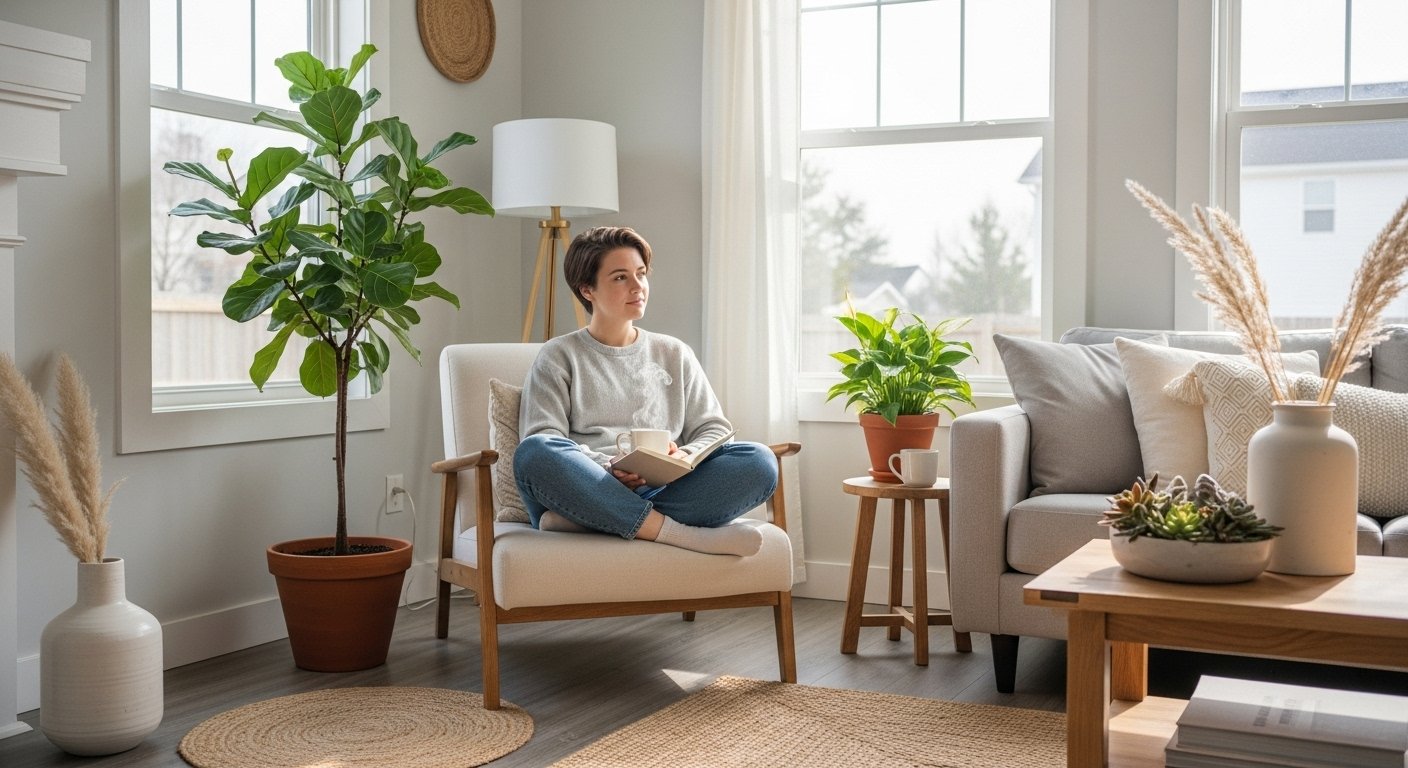In today’s fast-paced world, where overconsumption in America and endless digital noise shape daily life, more people are craving a healthier balance. This is where simpciry steps in—a modern approach built on an intentional living lifestyle, mindful habits, and conscious consumption. Rather than chasing material possessions, simpciry encourages decluttered living and thoughtful choices that support a balanced modern life and lasting peace of mind.
At its heart, simpciry is about building a life with purpose. It promotes a simple living philosophy that helps create the stress-free lifestyle USA readers are seeking. By practicing awareness and making clarity in daily choices, anyone can shift from chaos to calm. If you’ve ever wanted to discover how to live with intention and balance or explore the benefits of simple living today, simpciry offers a clear and practical path forward.
What is Simpciry?
Simpciry is more than just a trend—it’s a way of life that blends the philosophy of minimalism with mindful living practices. At its core, simpciry promotes a lifestyle of simplicity where people make intentional choices that align with their values and goals. Unlike the rush of consumer culture, it encourages going back to basics living, embracing purposeful routines, and creating a clutter-free environment that supports mental clarity and peace. In simple terms, simpciry is the modern meaning of simplicity—a practical approach that works in today’s busy, connected world.
A common question people ask is, “Is Simpciry just decluttering?” The answer is no. While decluttering is part of the journey, simpciry goes deeper. It’s about understanding the core values of simplicity and the essence of slow living. Imagine it like gardening: removing weeds (decluttering) is necessary, but real growth comes from planting meaningful seeds—your habits, routines, and priorities. Simpciry focuses on teaching people how to live a mindful lifestyle where you invest energy in what truly matters, instead of being consumed by distractions.
To make it clearer, here’s a quick comparison:
| Minimalism | Simpciry |
|---|---|
| Focuses on reducing possessions | Focuses on aligning lifestyle with purpose |
| Often seen as “living with less” | About living with less but better |
| Can feel restrictive for some | Flexible, values-driven, and adaptable |
| Goal: fewer things | Goal: defining intentional living and balance |
By breaking misconceptions about minimalism, simpciry offers a broader, friendlier approach. It’s not about empty rooms or strict rules. Instead, it’s a simple life philosophy explained through balance, clarity, and joy in small moments. It shows how mindfulness shapes simple living, helping people find meaning and peace in everyday life.
Why Simpciry Matters in Today’s Fast-Paced World

Modern life often feels like a never-ending race. From endless notifications to rising work pressure, people in the USA are struggling to keep balance. This is where simpciry becomes essential. It helps people pause, reflect, and build a life with more peace, purpose, and focus. By encouraging mindful choices, simpciry provides relief from chaos and gives a framework to manage digital overload, stress, and emotional exhaustion.
Simplicity in the Digital Age
We live in a time of constant connectivity stress. Smartphones, emails, and social platforms demand attention every minute, creating distractions that hurt both focus and mental health. Many Americans face smartphone addiction and struggle with attention economy issues, where every app fights for their limited time. Studies even show the effects of digital overload on mental health, including sleep problems and rising anxiety.
Simpciry offers practical solutions through digital mindfulness and the digital detox movement. By practicing screen-free habits, people can reduce social media minimalism pressure and restore balance between work, family, and rest. Some ways to apply simpciry include:
Setting “no phone” hours during meals or before bedtime.
Using apps that limit social media scrolling.
Practicing online distraction reduction by turning off non-essential notifications.
Teaching kids tech boundaries for families to avoid unhealthy dependence.
These simple adjustments help people balance tech and real life, leading to more meaningful connections and a healthier relationship with technology. Instead of being controlled by screens, simpciry teaches how to use tech for positive purposes while breaking free from smartphone dependence.
Reducing Stress and Overwhelm
Beyond technology, Americans face another challenge: stress. Long work hours, financial worries, and social obligations often create daily chaos that leaves little room for peace. Many are seeking anxiety relief strategies, burnout recovery methods, and better work-life balance USA lifestyles. Simpciry addresses this by encouraging stress management routines that are simple yet effective.
For example, instead of chasing endless productivity hacks, simpciry promotes mindfulness-based stress reduction techniques such as short breathing exercises, evening walks, or journaling. These small changes help build emotional resilience and give space for mental calmness. Think of it as decluttering your mind the same way you would declutter a messy room—it creates clarity and peace.
Here are a few effective stress reduction habits inspired by simpciry:
Starting mornings with 5 minutes of meditation.
Creating simple to-do lists with only 3–4 key tasks.
Taking short breaks to stretch and breathe during work.
Saying no to unnecessary commitments to protect mental energy.
By making these lifestyle changes to reduce anxiety, people can lower mental clutter and enjoy simplicity for inner peace. Simpciry doesn’t eliminate life’s challenges, but it provides routines for emotional wellness that make stress easier to manage.
Key Benefits of Living with Simpciry
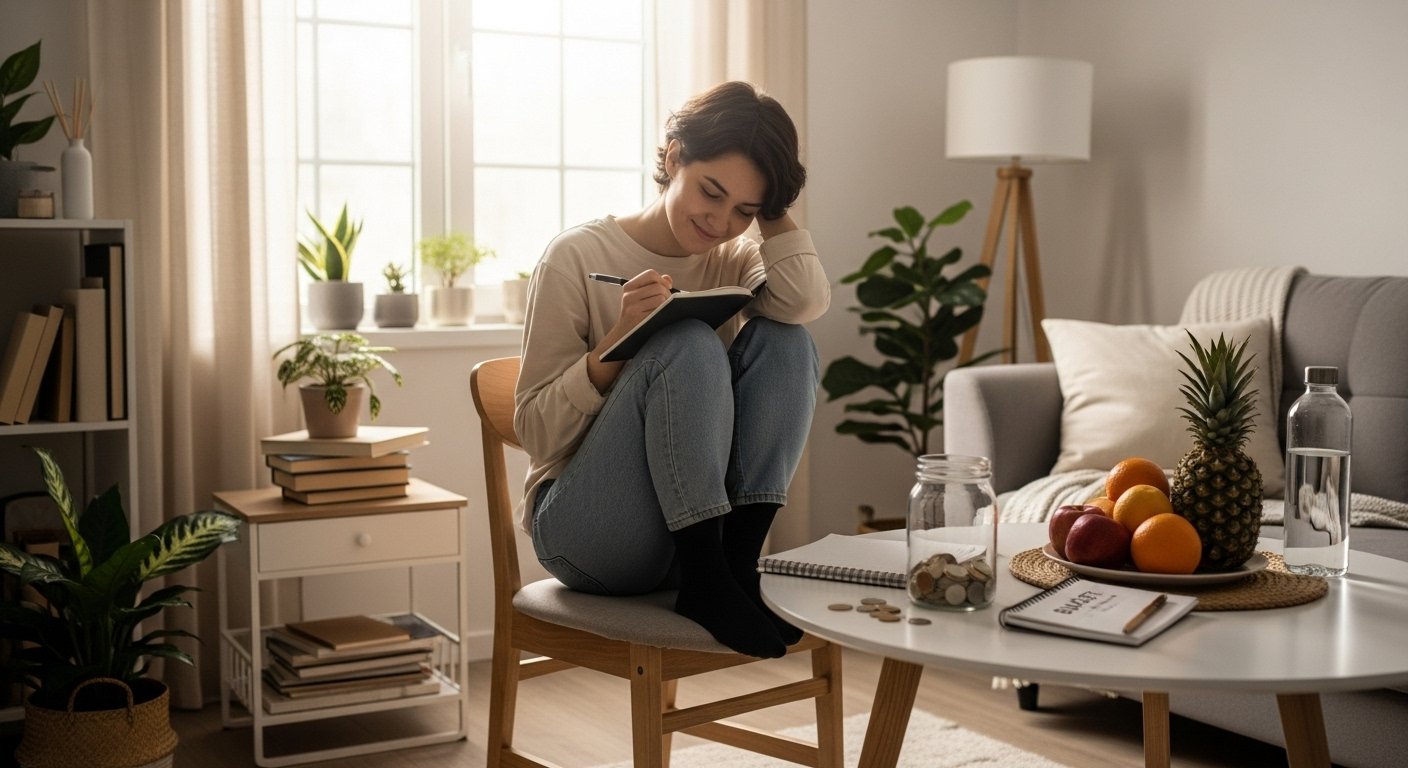
Choosing simpciry isn’t just about decluttering your home—it’s about transforming every part of life for the better. From emotional balance to financial clarity and even physical health, this lifestyle creates a strong foundation for happiness and focus. Below are some of the most powerful benefits of living with simpciry in today’s busy world.
Mental and Emotional Well-Being
One of the most valuable gifts of simpciry is the ability to achieve mental clarity benefits. When life is free of clutter, both physical and digital, the mind naturally feels lighter and more focused. Research shows that effects of clutter on the mind include distraction, stress, and even anxiety. By practicing self-awareness practices and building stress-free routines, people can experience more calm daily living.
For example, setting aside 10 minutes each morning for reflection or journaling creates space for positive mindset habits. These practical habits for peace of mind not only lower anxiety but also improve focus and concentration throughout the day. Living simply doesn’t mean missing out—it means enjoying less distraction and more peace.
Here’s how simplicity improves mental health in real life:
Reduced anxiety lifestyle: Decluttered spaces calm the nervous system.
Emotional balance: Fewer demands mean more time for meaningful connections.
Mindfulness for emotional well-being: Slow, intentional routines help ground emotions.
Living with purpose for happiness: Simpciry gives life meaning beyond consumerism.
In short, the emotional benefits of living with less are profound—it allows people to feel calmer, happier, and more in control of their daily lives.
Financial Freedom through Simplicity
Another key advantage of simpciry is financial relief. Many Americans struggle with overspending and debt because of consumer-driven culture. Adopting conscious spending habits and mindful budgeting is at the heart of this lifestyle. Instead of buying more, people focus on what truly adds value, which leads to financial clarity and even a debt-free lifestyle.
Think of it like this: every unnecessary purchase cut out is money saved for something meaningful, such as travel, education, or future security. Practicing frugal living tips—like cooking at home, canceling unused subscriptions, or buying quality over quantity—naturally leads to savings through minimalism. These small shifts can lower monthly bills and reduce long-term financial stress.
Here are a few simple ways simpciry saves money:
Track expenses with a weekly budget check-in.
Apply the “24-hour rule” before buying non-essentials.
Swap expensive outings with meaningful, low-cost activities.
Focus on living within means instead of chasing lifestyle inflation.
By following these simple finance hacks, families can embrace smart money management and truly live better on less income—without feeling deprived.
Health and Productivity
Living with simpciry also creates powerful improvements in health and work. A clutter-free environment has direct health benefits of decluttered spaces, including better sleep, improved mood, and reduced stress. By focusing on wellness routines and balanced exercise habits, people feel more energized and grounded.
Daily calming morning practices, such as stretching or meditation, set a positive tone and boost productivity through focus. This is because simpciry helps remove unnecessary distractions, making it easier to concentrate on what matters most. It’s not about doing more, but about doing things with intention.
Some effective routines for better sleep and energy include:
Creating screen-free evenings to improve sleep quality.
Following simple diet for health—fresh, whole foods instead of processed ones.
Practicing light physical activity daily for body and mind balance.
Setting consistent daily structure benefits to increase work efficiency.
By adopting these lifestyle hacks for better health, people experience not just physical vitality but also improved focus and creativity. In other words, simple living boosts productivity by aligning energy, wellness, and purpose.
Practical Ways to Embrace Simpciry in Daily Life

The beauty of simpciry is that it’s not just an idea, it’s a practice you can weave into everyday routines. By bringing intention to the way you live at home, at work, in travel & leisure, and even in relationships, you can create a life filled with peace, clarity, and balance. Let’s explore how to make this philosophy real in daily living.
At Home
Your home should be a space of rest, not stress. Practicing home decluttering ideas is the first step to achieving clutter-free living spaces. Start by sorting items into keep, donate, and discard categories. This simple process clears physical clutter and brings mental clarity.
Design choices also play a role. A touch of minimalist interior design—neutral colors, open layouts, and intentional decorating—creates a calming interior setup. Add sustainable household choices like energy-efficient lighting or reusable kitchen products, and your home becomes part of a green living solution.
For small spaces, try storage and organization hacks such as vertical shelving or under-bed storage. Even small steps, like reducing waste or setting up eco-friendly home habits, can transform your space into a peaceful retreat.
At Work
In today’s busy world, simplicity at work is essential. Practicing workplace simplicity means creating simplified workflows and cutting distractions. One effective way is through time blocking methods, where you dedicate chunks of the day to specific tasks. This improves focus at the workplace and lowers stress.
Digital chaos also adds to overwhelm. Using digital organization hacks for professionals—like setting up folders, unsubscribing from unnecessary emails, and limiting open tabs—can save hours each week. Pair this with boundary setting at work (like not answering emails after hours), and you’ll notice less stress and fewer chances of burnout.
Finally, practicing productivity habits USA like “working smarter, not harder” allows professionals to manage tasks effectively without sacrificing well-being. Avoid burnout techniques, such as short breaks or mindfulness exercises, are also crucial to maintaining balance.
In Travel & Leisure
Travel doesn’t need to be about overpacking or rushing through destinations. The concept of slow travel benefits helps people focus on meaningful experiences instead of ticking off tourist spots. For example, spending extra time in one city allows deeper cultural connection compared to quick trips.
Adopting minimalist packing tips—like carrying versatile clothing and essential gadgets—leads to a travel light lifestyle and less stress at airports. Add in eco-friendly tourism practices, such as supporting local businesses or avoiding single-use plastics, and your vacations become both enjoyable and sustainable.
Leisure time at home can also benefit from simpciry. Try simple outdoor activities, board games with family, or mindful leisure time like journaling. These stress-free travel hacks and lifestyle choices prove that joy comes from presence, not possessions.
In Relationships
True connection thrives on simplicity. Mindful communication—listening fully without distractions—builds deeper human connections. Choosing intentional friendships over quantity helps reduce social pressure and encourages quality time with loved ones.
Healthy boundaries with toxic people are also essential for emotional balance. By letting go of draining connections, you create space for emotional intimacy and genuine bonds. A few simple family traditions, like weekly dinners or morning walks, nurture closeness without requiring extravagant effort.
The importance of mindful relationships cannot be overstated. Through meaningful conversations and shared routines, simpciry transforms relationships into sources of peace and strength rather than stress.
Simpciry and Mindfulness
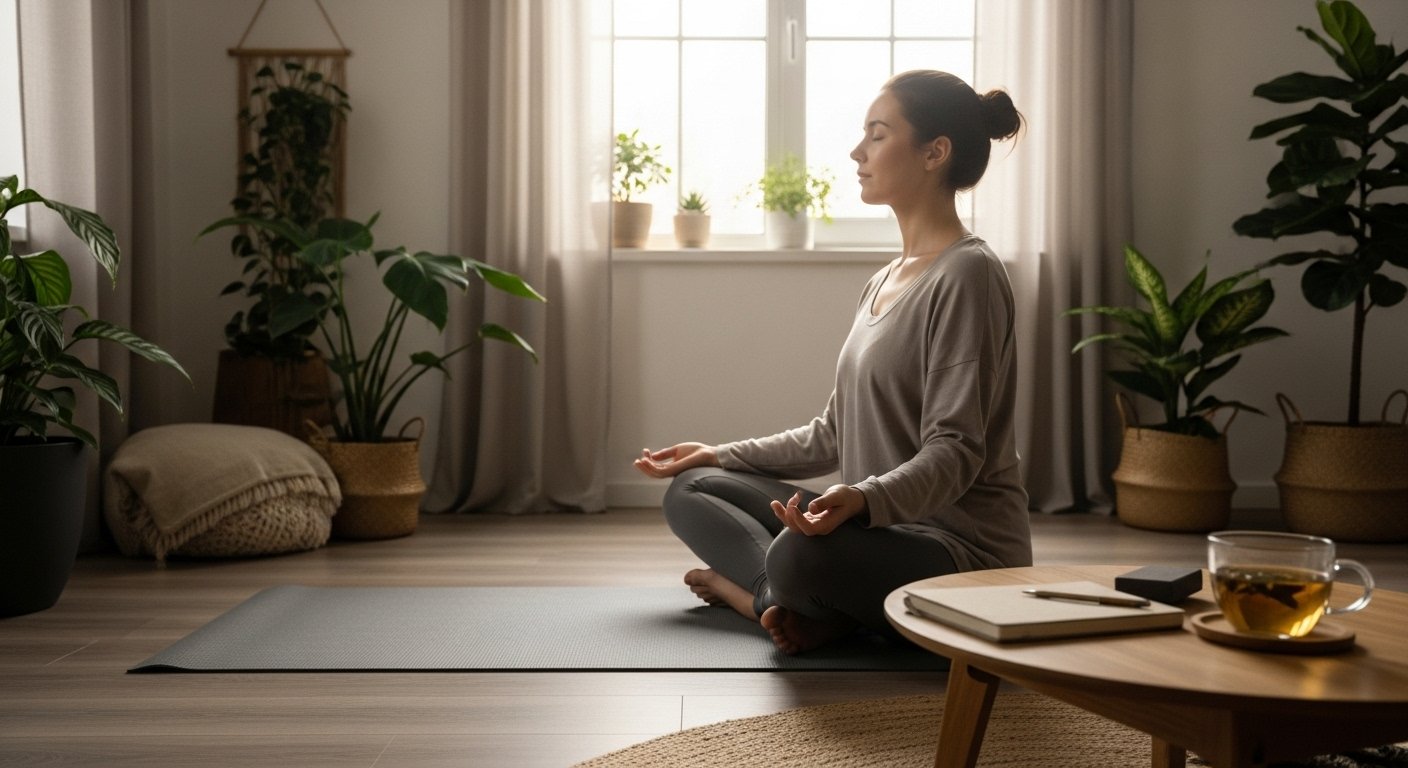
At the heart of simpciry lies the practice of mindfulness—a way of being that helps us slow down, breathe, and live with more awareness. In a fast-moving world, mindfulness connects us to the present and keeps life from feeling overwhelming. By combining simple living with mindfulness habits, we can find clarity, joy, and balance in even the busiest of days.
One of the easiest entry points is meditation practices. Even 5 minutes of focused breathing each morning can reset the mind and prepare it for the day. Pair this with morning rituals such as stretching, light journaling, or sipping tea without distractions, and you create a calm foundation for your routine. These mindful morning routine ideas help reduce stress, improve focus, and encourage presence in daily life.
Another powerful tool is gratitude journaling. Writing down three things you are thankful for daily can shift your mindset toward positivity. It trains your brain to focus less on problems and more on small wins. This simple act is one of the most effective practical habits for self-awareness and emotional balance.
Mindfulness also extends to how we eat. Practicing mindful eating means slowing down during meals, savoring each bite, and avoiding distractions like scrolling on your phone. Studies show that mindful meals and eating habits improve digestion, reduce overeating, and make food more enjoyable. This aligns beautifully with simpciry’s philosophy of intentional living—doing less, but with more meaning.
Here are a few daily mindfulness exercises to pair with simpciry:
Short breathing exercises during work breaks.
Taking mindful walks without headphones.
Practicing focus training by doing one task at a time.
Ending the day with a 5-minute reflection or journaling for gratitude and clarity.
The key is consistency. Small steps practiced daily build long-lasting habits. Whether through meditation, gratitude journaling, or mindful routines, the connection between simpciry and mindfulness creates a lifestyle of calm, clarity, and purpose.
Simpciry in the Modern Digital & Business World

In today’s connected age, simpciry is more than a personal lifestyle—it’s also a practical approach for how we use technology and run businesses. With constant pings, emails, and endless meetings, both individuals and companies face overwhelm. By embracing digital minimalism and simplified workflows, we can achieve more with less stress.
Minimalism in Technology
Americans spend an average of 7+ hours a day on screens, and much of that time is consumed by scrolling. This creates fatigue, distraction, and even mental health struggles. Simpciry helps by promoting a minimal tech lifestyle that encourages mindful device use instead of letting gadgets control us.
Practical ways to embrace digital minimalism include:
Using digital detox apps to track and limit screen time.
Creating phone-free routines, such as no devices during meals or before bed.
Setting social media boundaries by deleting unused apps or limiting daily use.
Practicing decluttered digital space by organizing files, emails, and notifications.
These simple steps build internet balance habits and encourage a healthier relationship with devices. Whether it’s finding the best digital detox apps, setting tech boundaries for families, or managing notifications for focus, simpciry teaches that we don’t need to abandon technology. Instead, we learn to use it with intention, turning it into a tool for growth rather than distraction.
Simplicity in Business & Workflows
Just as clutter can overwhelm a home, complicated systems can overwhelm a company. Many modern businesses are buried under layers of unnecessary processes, duplicated efforts, and constant meetings. Simpciry offers a solution through simple business systems and process simplification.
Companies adopting a lean business model often find they save money, improve employee satisfaction, and serve customers better. Examples include using workflow automation tools to cut repetitive tasks, or applying minimal management styles that empower employees instead of micromanaging them.
Here are a few productivity hacks for professionals and teams inspired by simpciry:
Limit meetings to only when necessary, with clear agendas.
Use workflow automation for tasks like invoicing or customer follow-ups.
Apply focus-driven leadership—prioritizing deep work over constant multitasking.
Adopt cost-saving through simplicity, such as eliminating redundant software or unused subscriptions.
For small businesses, these process improvement strategies mean less waste and more agility. For large organizations, workplace optimization can create efficient teams and better customer experiences.
Eco-Friendly and Sustainable Side of Simpciry
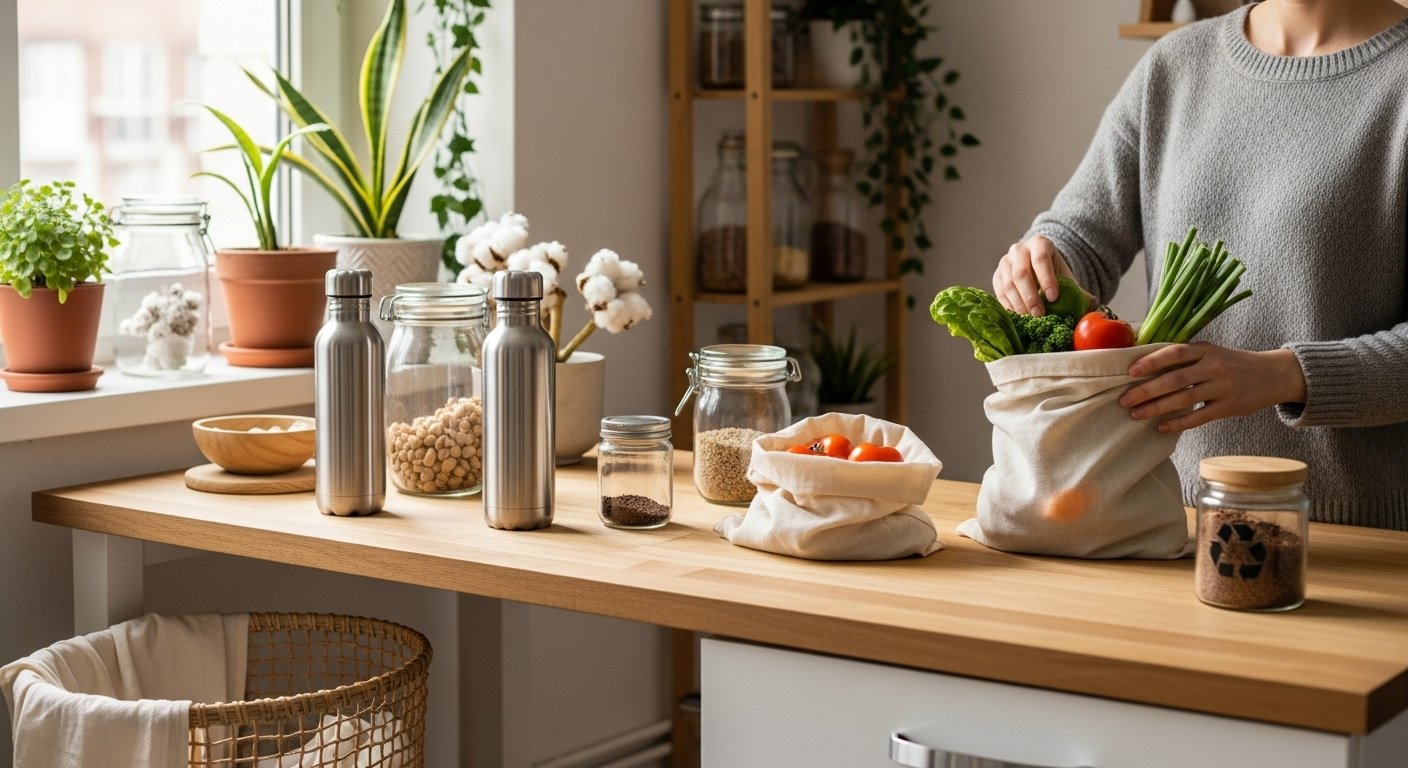
One of the most powerful aspects of simpciry is its natural alignment with sustainability. By choosing to live with less, we automatically reduce waste, conserve energy, and make room for a healthier planet. In fact, the eco-conscious lifestyle promoted by simpciry often mirrors practices like zero waste living, plastic-free habits, and conscious consumerism—all of which are gaining momentum in the USA today.
For example, when we embrace sustainable choices, such as avoiding single-use plastics or choosing green products USA offers, we reduce both our expenses and our carbon footprint. Instead of chasing trends, simpciry encourages buying only what we need, often opting for organic home products, sustainable fashion, or items designed to last. This shift directly supports eco-friendly design and renewable living solutions that benefit both individuals and the environment.
Here are a few eco-friendly lifestyle tips inspired by simpciry:
Practice reducing waste at home by composting food scraps and recycling responsibly.
Choose eco-conscious shopping choices, like buying second-hand or supporting local artisans.
Invest in reusable products—water bottles, cloth bags, and glass containers—that replace single-use plastics.
Embrace affordable green living hacks, such as energy-efficient lightbulbs and water-saving devices.
Explore sustainable living in the US communities that share tips, swaps, and support.
The benefits of buying less go beyond decluttering—it creates a ripple effect. Every purchase avoided means fewer resources used, less packaging wasted, and more room for mindful living. Families can also involve children in eco-friendly habits, teaching them small practices like turning off lights, planting trees, or enjoying plastic-free habits as part of their daily routines.
Ultimately, why minimalism supports sustainability is simple: less consumption equals less strain on the planet. By merging simpciry with an eco-conscious lifestyle, we take small but meaningful steps toward a greener, more balanced future.
Resources to Start Your Simpciry Journey
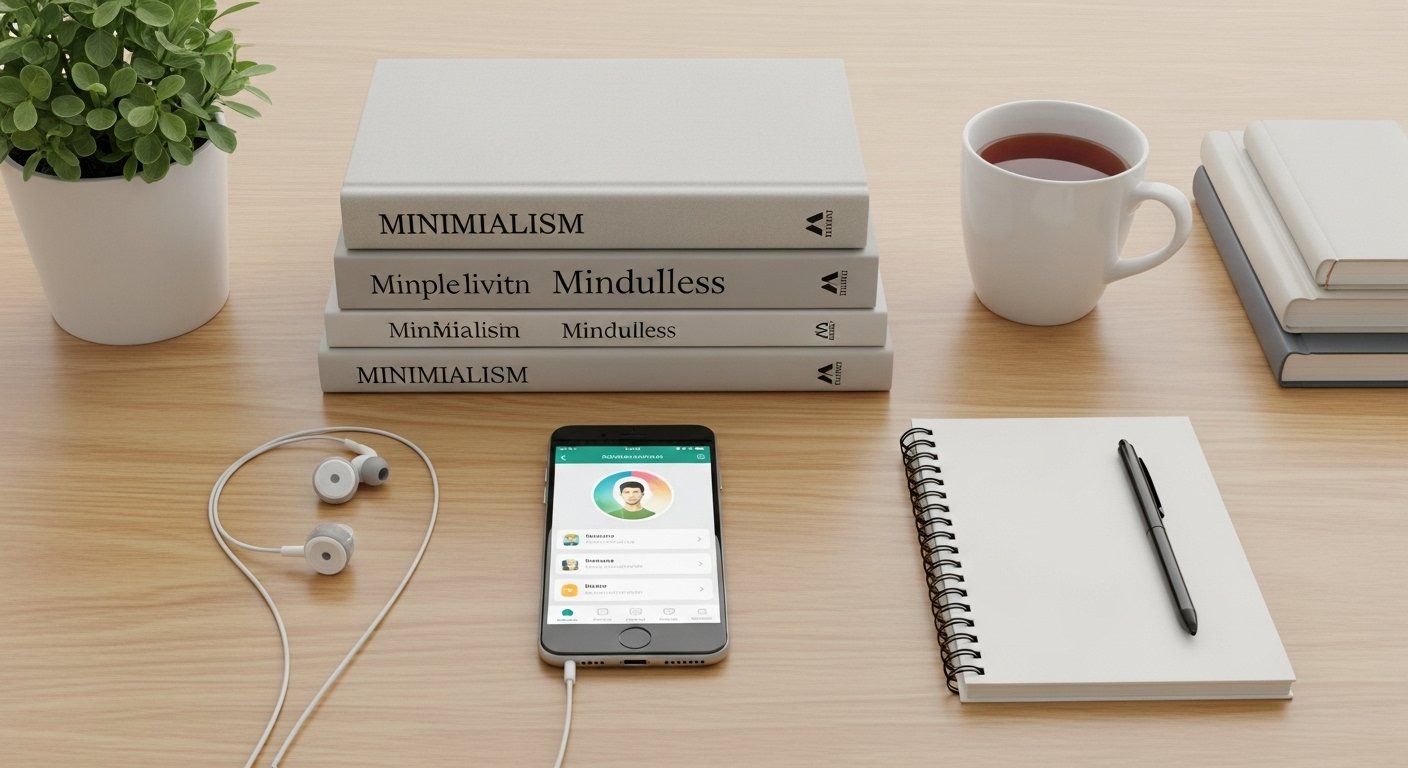
Starting your simpciry journey can feel overwhelming at first, but the right tools and guidance make it easier. Thankfully, there are countless mindful living resources that can help you take small, steady steps toward a simpler life. From best simplicity books to minimalism podcasts and lifestyle apps, you’ll find inspiration and practical guidance everywhere. These resources are like a roadmap, showing you how to declutter, stay focused, and create habits that actually last.
For readers who love books, some of the best books on simple living include titles like The Life-Changing Magic of Tidying Up by Marie Kondo or Essentialism by Greg McKeown. If you prefer audio learning, podcasts about intentional living such as The Minimalists or The Mindful Kind can inspire you on the go. Technology can also play a positive role—apps to help declutter life like Todoist, Notion, or Headspace work as digital tools for focus and mindfulness. They are beginner-friendly, helping you stay consistent with your new lifestyle.
Community support is another powerful motivator. You can join online communities and support groups USA that focus on simple living, minimalism, and eco-friendly habits. These spaces are perfect for sharing struggles, celebrating wins, and finding accountability. Many inspirational blogs for minimalism also offer free resources on simplicity, such as printable checklists, challenges, and guided routines.
Here’s a quick list of resources to kickstart simpciry:
Self-improvement guides and mindful living resources (books, blogs, e-books).
Minimalism podcasts that offer practical and motivational content.
Productivity apps and digital tools for mindfulness to reduce distractions.
Online platforms for focus habits and decluttering challenges.
Support groups for simple lifestyle where you can connect with like-minded people.
With so many options, you don’t need to start big—just pick one resource, whether it’s a book, podcast, or app, and let it guide your first step.
Real Stories & Testimonials on Simpciry

One of the most inspiring ways to understand simpciry is through real-life success stories and testimonials. Reading about user experiences and lifestyle transformation stories shows how everyday people have embraced a simpler lifestyle and discovered more peace, focus, and happiness. These community voices reveal that living with less is not about sacrifice, but about creating space for more meaning, balance, and joy.
Take Sarah from New York, for example. She struggled with stress, clutter, and constant overwork until she discovered the power of mindful living. Through small changes—like practicing gratitude journaling, reducing shopping, and adopting minimal routines—she found more energy and emotional balance. As she puts it, “Minimalism changed my life because it gave me clarity and freedom.” Her story reflects countless personal growth through minimalism journeys across the world.
Another testimonial comes from John, a father in Texas, who faced financial stress. By cutting unnecessary expenses, practicing conscious spending habits, and focusing on family time instead of material things, he achieved debt freedom through simplicity. His transformation is one of many case studies on stress reduction and financial clarity that prove simplicity is a practical, life-changing path.
Here are a few common themes from authentic reviews and inspiring lifestyle shifts:
Better mental health – People report less stress, anxiety, and overwhelm.
Financial clarity – Many achieved savings and debt reduction.
Calm living spaces – Decluttering gave them peace at home.
Stronger relationships – Quality time replaced social pressure.
Personal growth – Simpciry opened doors to mindfulness and purpose.
These testimonials from Americans living simply highlight that simpciry is not just a concept but a real movement changing lives every day. Whether it’s reducing stress, finding financial stability, or creating a meaningful daily routine, the transformation journeys are proof that living simply leads to lasting balance and happiness.
Future of Simpciry in Lifestyle & Society
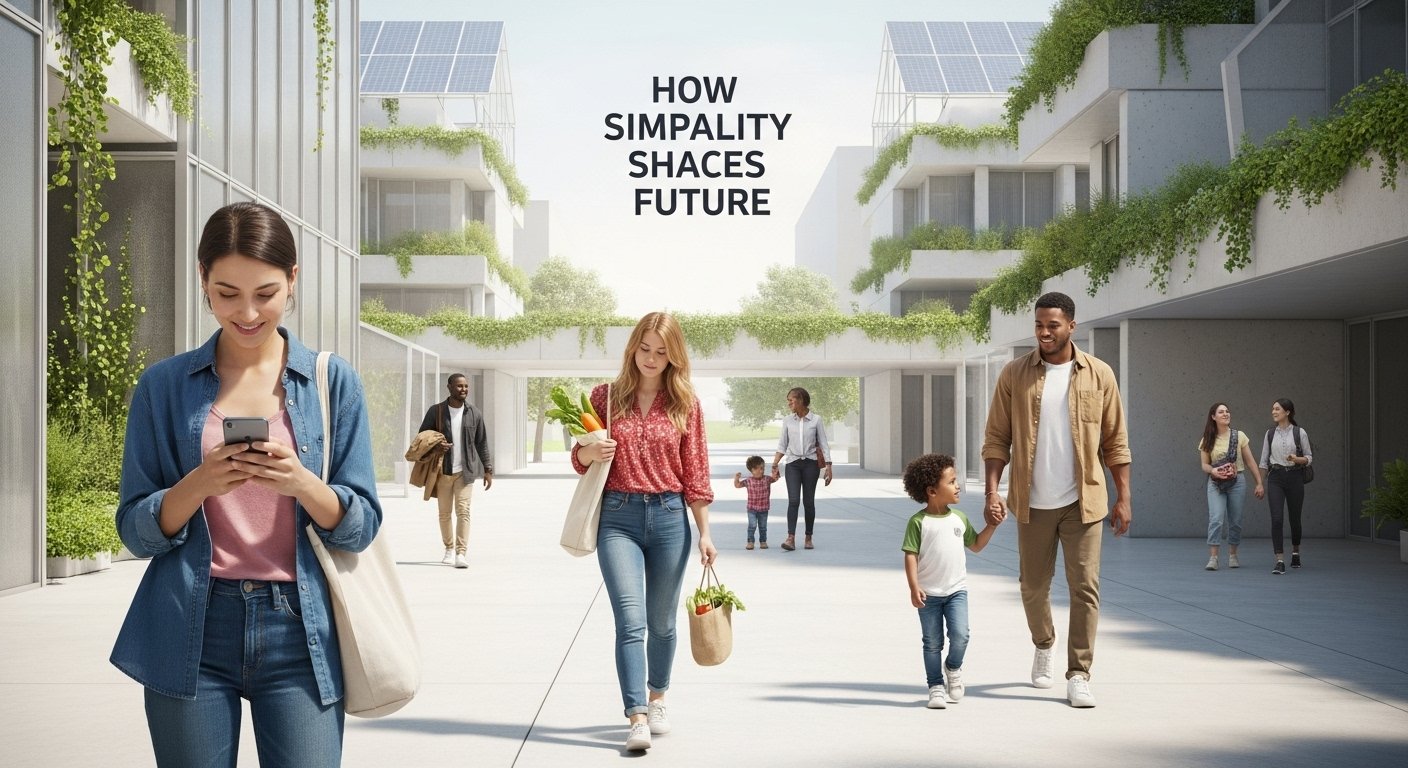
The future of simpciry looks bright as more people across the world—and especially in the USA—realize the value of living with less. Current cultural shifts in minimalism and rising wellness trends in America show that simplicity is no longer just a personal choice, but a growing social movement. As cities evolve, businesses change, and families seek balance, intentional living culture will continue to reshape how we view success, happiness, and connection.
One of the strongest forces behind this movement is digital well-being. With constant notifications, smartphone dependency, and online distractions, people are seeking ways to set boundaries and practice mindful living. Experts predict that tech and minimalism future connection will bring solutions like digital detox apps, screen-free habits, and mindful technology use into mainstream wellness practices. This shift is not about rejecting technology but learning how to use it wisely for focus, creativity, and emotional health.
At the same time, eco-conscious movements are gaining momentum. From sustainability forecasts to eco-friendly urban design, the future of simpciry aligns closely with reducing waste, choosing green products, and embracing eco-conscious lifestyles. Younger generations, especially Gen Z, are driving this change by prioritizing values over consumerism. They are more likely to adopt minimalist housing, renewable living solutions, and sustainable fashion—all of which reduce environmental impact while promoting balance.
Another powerful trend is the social connection evolution. As people cut back on endless social media scrolling and overwhelming schedules, they are finding deeper human connections through community, quality time, and shared values. This is a direct reflection of the social impact of the simplicity movement, where relationships matter more than material things. Experts suggest that in the coming years, wellness culture will shift to focus less on quick fixes and more on intentional living practices such as mindfulness, gratitude, and slow living.
Here are some future trends in simple living to watch for:
Eco-conscious lifestyles – prioritizing green choices and zero-waste habits.
Digital well-being future – using tech mindfully instead of being controlled by it.
Simplicity in urban design – smaller, more sustainable living spaces.
Mental health trends – linking minimalism with emotional resilience.
Intentional living culture – focusing on purpose, not possessions.
In short, the future of simpciry will not only shape individual well-being but also influence cities, societies, and cultures worldwide. By combining minimalism, mindfulness, and sustainability, this movement is set to become one of the strongest lifestyle shifts of the coming decades.
Conclusion
In a world that often feels overwhelming, simpciry offers a refreshing path toward balance, peace, and fulfillment. By making life transformation choices, we begin to see how small shifts—like decluttering spaces, setting boundaries with technology, or focusing on what truly matters—can create powerful ripple effects. The real strength of this lifestyle lies in its long-term benefits, from better mental health and financial freedom to stronger relationships and a deeper sense of purpose. Choosing simpciry is not about giving up joy, but about finding it in more meaningful ways. When we commit to intentional life decisions, we open the door to clarity, calmness, and true contentment.
The future belongs to those who value simplicity for happiness and align their days with a clear sense of direction. Whether you are just starting with small steps or ready for bigger lifestyle change decisions, the journey is less about perfection and more about progress. Take this as your motivation to simplify, to live with intention, and to embrace the beauty of less. Your tomorrow can be lighter, clearer, and brighter when you choose simpciry today.
FAQs About Simpciry
Is Simpciry the same as minimalism?
Not exactly. While both focus on reducing excess, Simpciry goes beyond decluttering. It blends the simple lifestyle philosophy with mindfulness, eco-awareness, and intentional choices. Minimalism is often about owning less, while Simpciry emphasizes living with purpose, creating balance, and designing a lifestyle that feels sustainable and fulfilling for everyday life in the USA.
How do I start living simply with Simpciry?
The best way is to begin small. Start with easy daily practice tips like decluttering one drawer, setting phone boundaries, or simplifying meal routines. Gradual steps prevent overwhelm and help you stay consistent. Over time, these small habits build into a sustainable, intentional lifestyle. Remember, it’s about progress, not perfection.
Can Simpciry help me save money?
Yes! One of the hidden strengths of Simpciry is money-saving through simplicity. By practicing conscious spending, avoiding impulse buys, and focusing on what truly matters, you reduce waste and cut unnecessary expenses. Many Americans find that living simply allows them to pay off debt faster, build savings, and feel more in control of their financial future.
What are common beginner struggles with Simpciry?
Most people face simple lifestyle doubts like “Am I doing this right?” or “Do I need to give up everything I enjoy?” The truth is, Simpciry is flexible and personal. Common beginner struggles include letting go of clutter, handling social pressure, and staying motivated. With patience and community support, these challenges become easier to overcome.
Is Simpciry realistic in the USA’s busy lifestyle?
Absolutely. While the USA’s fast-paced culture can be challenging, Simpciry offers practical advice for balancing work, family, and personal growth. By adopting simple routines, practicing mindful choices, and learning to say “no” to excess, you can design a lifestyle that feels calmer and more intentional—even in a demanding environment.
What are the biggest myths about Simpciry?
One of the biggest Simpciry myths is that it’s only for minimalists who own almost nothing. In reality, Simpciry is about finding balance, not extremes. Another myth is that it’s rigid or boring. On the contrary, it’s a flexible lifestyle that allows for joy, creativity, and personal preferences while still reducing stress and promoting clarity.

